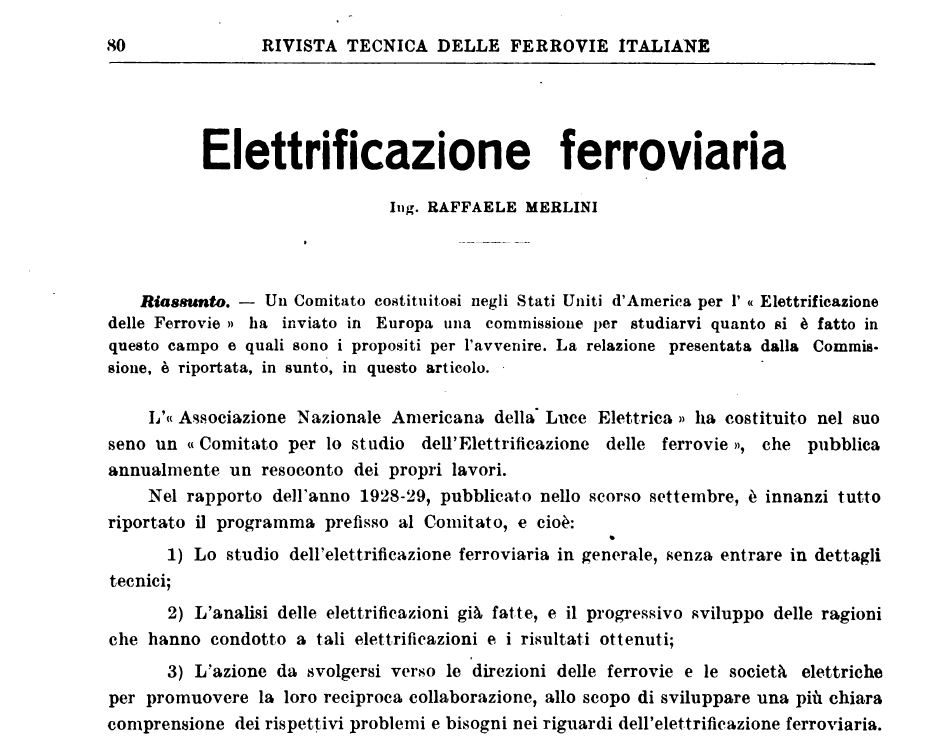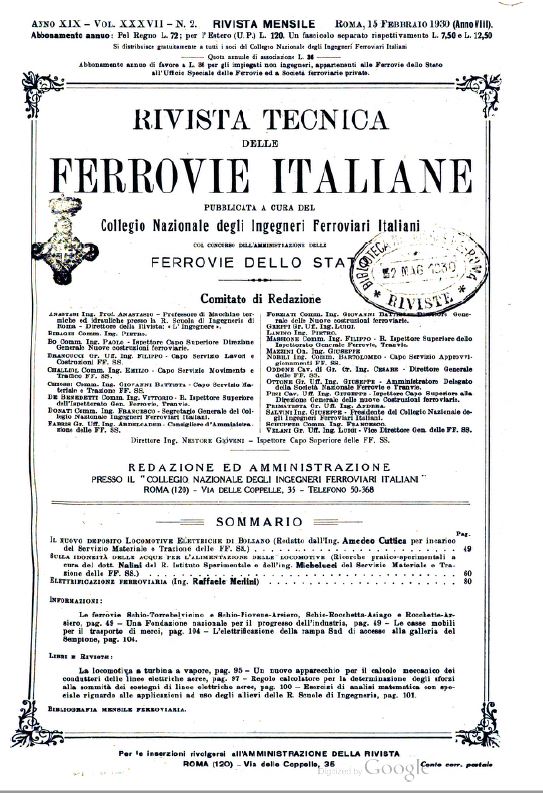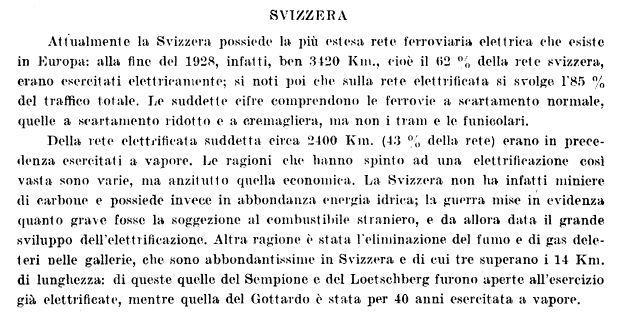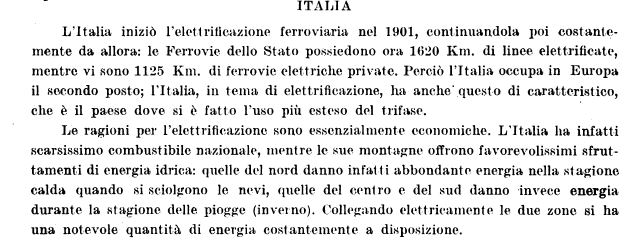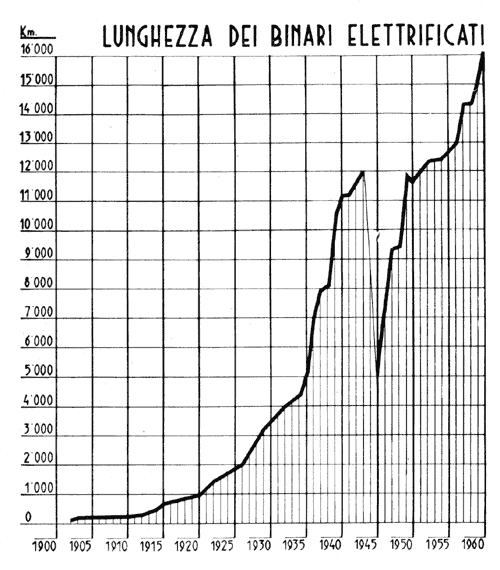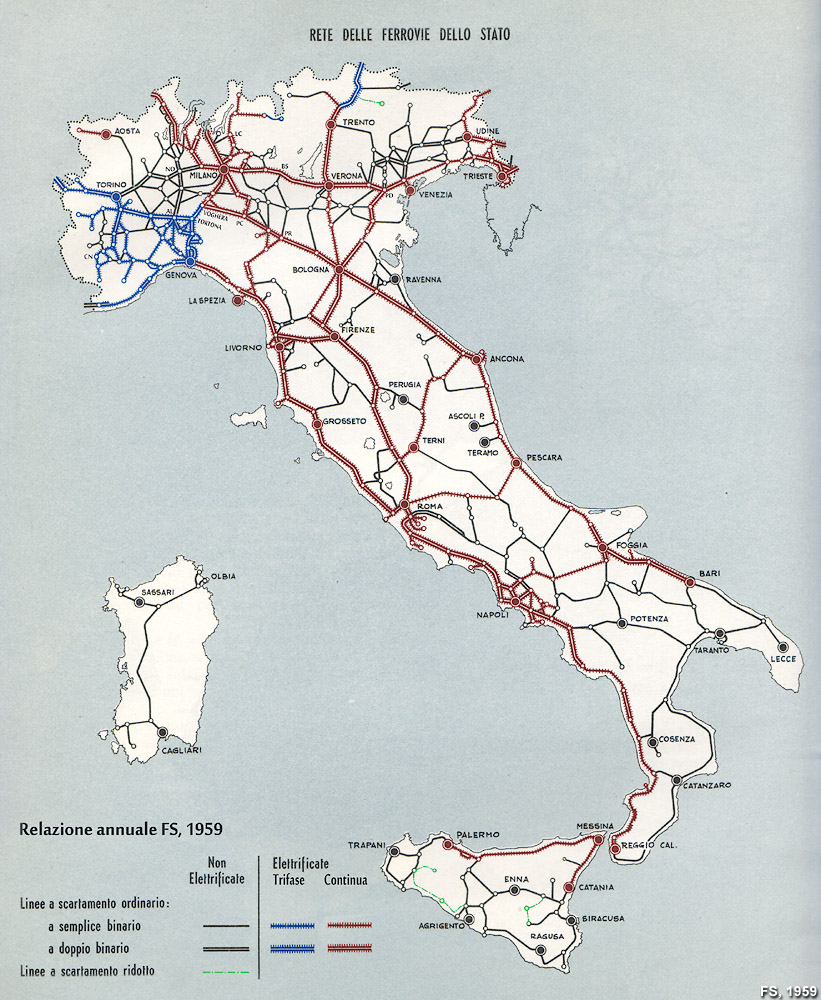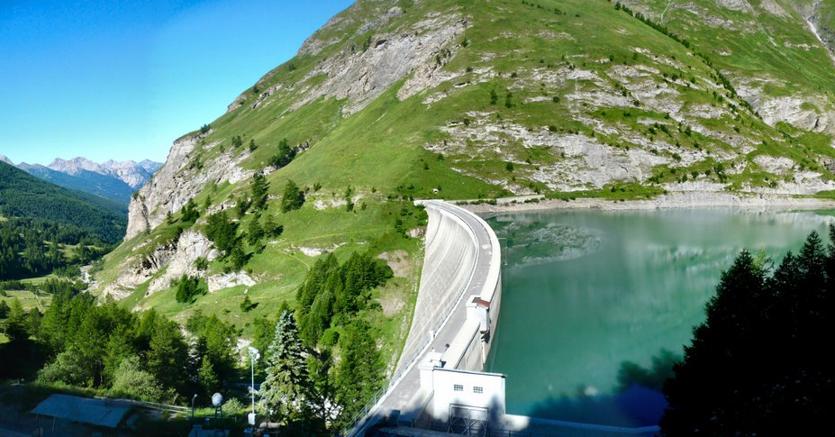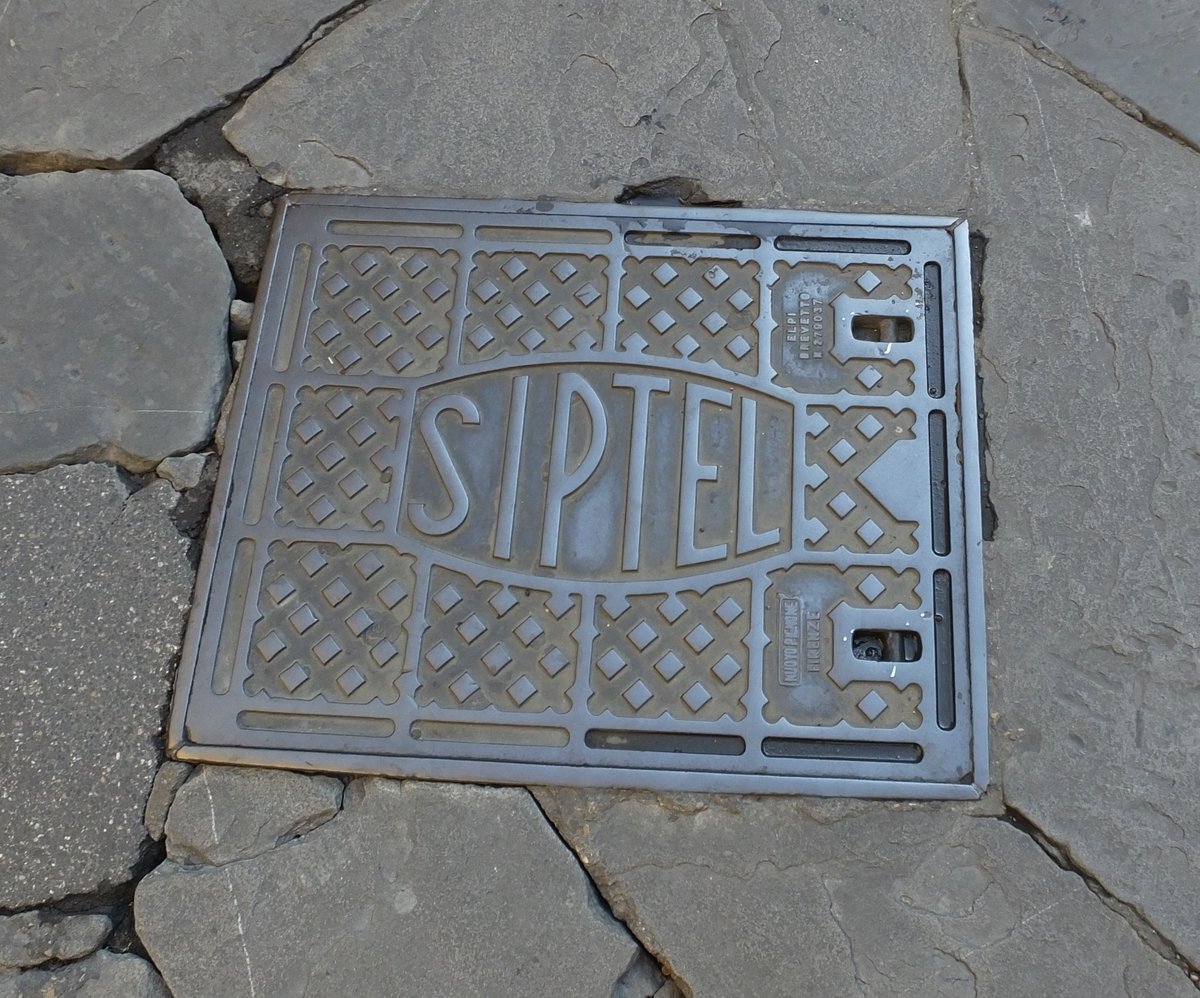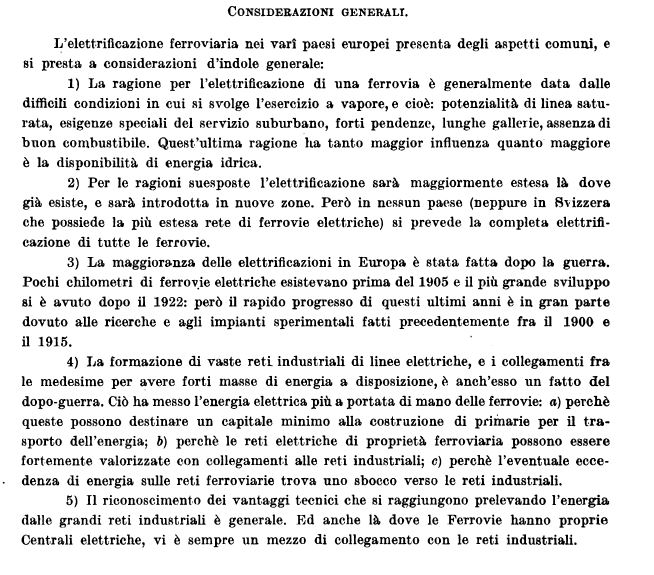1/ There has been a lot of talking in here recently about learning from abroad and rail electrification. That is why I’m sharing a little gem I found a while ago:
The Italian summary of a 1929 European study trip of the US-based “Committee for Railway Electrification”
The Italian summary of a 1929 European study trip of the US-based “Committee for Railway Electrification”
2/ The Committee was established by the American “National Electric Light Association” to learn lessons from the electrification efforts of major European countries. It was translated and summarized in a 1930 issue of the “Rivista Tecnica delle Ferrovie Italiane”
3/ Some interesting trends that continued today appears already in the 1930s. For example: the lack of a systematic effort for electrification on mainline rail in UK; the availability of cheap coal as a deterrent; the concentration of efforts on urban and suburban networks.
4/ Of course, Switzerland comes out as the head of the class. 3420 km of electrified rail, 62% of the network, 85% of traffic volume. The reasons are quite obvious: cheap hydro power, many tunnels and steep grades are the main drivers of massive electrification
5/ The runner-up is Italy: 2745 km of electrified lines (1620 km of FS-owned mainline, 1125 of private local and suburban rail). The main drivers are the same as Switzerland: cheap Hydro power vs expensive imported coal, several long tunnels
6/ After further research (I need distraction from dissertation writing) I ended up on a 1961 chart from the same journal illustrating the pace of electrification (in track mileage) in Italy. After the post WWI takeoff, the growth is constant, stopped only temporarily by WWII
7/ In the same article there is this map of electrified lines in 1959 (credits go to http://stagniweb.it , a wonderful repository of old rail and urban facts). The peculiarity is for sure the large extension of three-phase electrification in the N-W, even in local lines.
8/ A main reason is the early electrification of many lines in Piemonte lines was the fact that it was strongly supported by the S.I.P. (Società Idroelettrica Piemontese), while FS even built its own dam (and a small rail to reach it) to power the Frejus line
9/ A side fun fact: the S.I.P. was one of the earlier developer of a telephone network with its parent company SIPTEL. After both electricity and telecommunications were nationalized in the 1960s, SIPTEL, simplified in SIP, became the state-owned TC company, later Telecom Italia
10/ Since it maintained its original S.I.P. acronym, many struggled to understand its meaning. My grandpa used to say it was for “Società Italiana PELEFONI”, that he said was the old word for “telefoni” (telephone). That is not true, but, you now, I was a kid so...
11/ Back to electrification history, I also found a 1961 newsreel about the inauguration of Milan-Turin electrification:
152 km double track
2 substations
7 buildings for rail workers
90 Bn liras, that is 115 m € today. Not bad https://www.facebook.com/FondazioneFsItaliane/videos/154111322709824/
152 km double track
2 substations
7 buildings for rail workers
90 Bn liras, that is 115 m € today. Not bad https://www.facebook.com/FondazioneFsItaliane/videos/154111322709824/
12/ Enough digression. The report unfortunately doesn’t have any recommendation for US railways, apart stressing the importance of contextual factors (hydropower) and the possible synergies of rail/industrial electricity grids (that is what they were mainly interested about).
13/ Anyway, it would be interesting to have a similar snapshot of rail electrification in the US at the same time and read the original version of this report.
Does Anyone have an idea if it could be available online (or even of its actual existence…)?
Does Anyone have an idea if it could be available online (or even of its actual existence…)?

 Read on Twitter
Read on Twitter